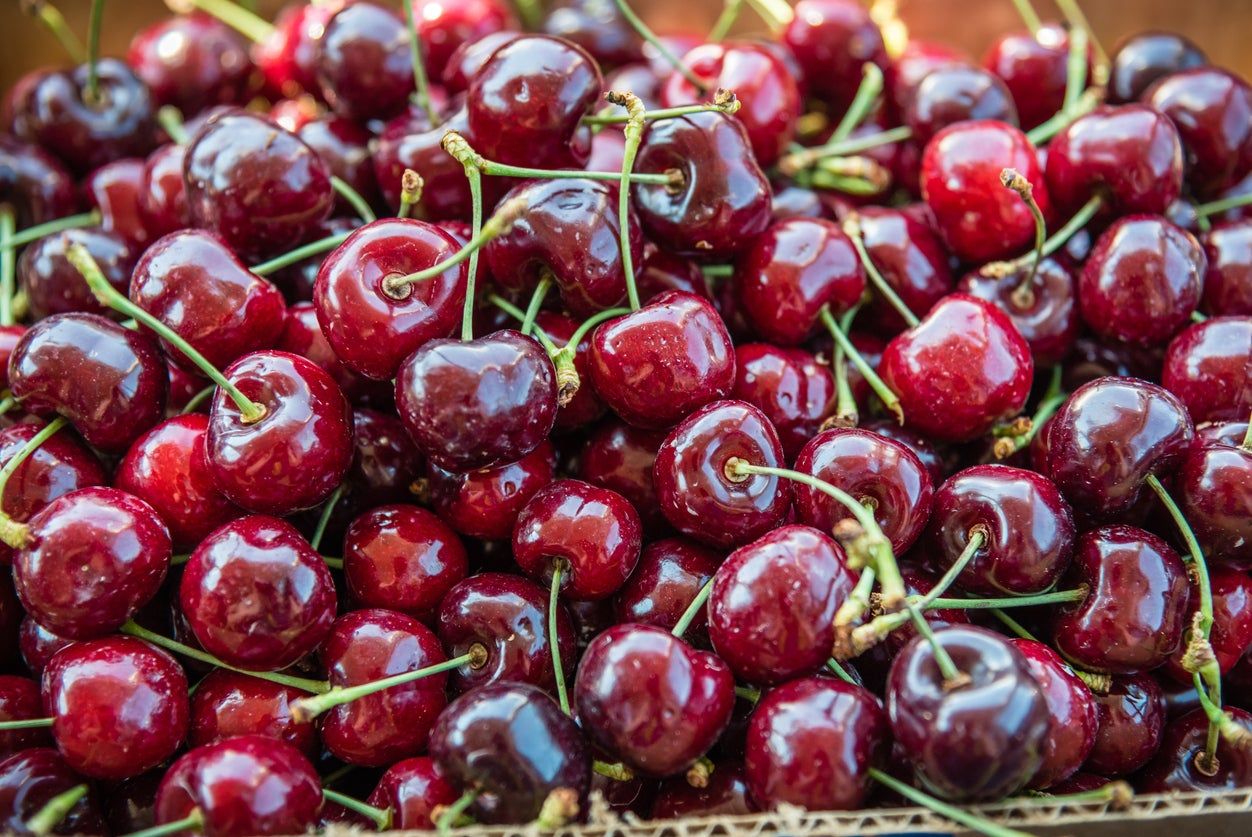Sonata Cherry Info – How To Grow Sonata Cherries In The Garden


Sonata cherry trees, which originated in Canada, produce an abundance of plump, sweet cherries every summer. The attractive cherries are deep mahogany red, and the juicy flesh is also red. The rich, flavorful cherries are great cooked, frozen dried, or eaten fresh. According to Sonata cherry information, this hardy cherry tree is suitable for growing in USDA plant hardiness zones 5 through 7. Interested in growing a Sonata cherry tree? Let’s learn more about caring for Sonata cherries in the landscape.
How to Grow Sonata Cherries
Sonata cherry trees are self-fruiting, so it isn’t necessary to plant a pollinating variety nearby. However, planting another variety of sweet cherries within 50 feet (15 m.) can result in larger harvests.
Sonata cherry trees thrive in rich soil, but they are adaptable to nearly any type of well-drained soil, with the exception of heavy clay or rocky soil. Dig in a generous amount of organic material such as compost, manure, dry grass clippings, or chopped leaves before planting. This is especially important if your soil is nutrient-poor, or if it contains substantial amounts of clay or sand.
Established Sonata cherry trees require very little supplemental irrigation unless the weather is dry. In this case, water deeply, using a drip irrigation system or soaker hose, every seven days to two weeks. Trees planted in sandy soil may need more frequent irrigation.
Fertilize your cherry trees year, beginning when the trees start to produce fruit, usually three to five years after planting. Apply a general-purpose, balanced fertilizer in early spring or later, but never after July, or midsummer. Cherry trees are light feeders, so be careful not to over-fertilize. Too much fertilizer may produce lush, leafy foliage at the expense of fruit.
Prune cherry trees every year in late winter or early spring. Thinning Sonata cherries is beneficial when there are more than 10 tiny cherries per spur. This may seem counterproductive, but thinning reduces branch breakage caused by a too-heavy load and improves fruit quality and size.
Cherry tree harvest is generally in early summer, depending on climate and weather conditions.
Gardening tips, videos, info and more delivered right to your inbox!
Sign up for the Gardening Know How newsletter today and receive a free copy of our e-book "How to Grow Delicious Tomatoes".

A Credentialed Garden Writer, Mary H. Dyer was with Gardening Know How in the very beginning, publishing articles as early as 2007.
-
 How To Grow Strawberries From A Strawberry: All You Need To Cultivate Yummy Fruits
How To Grow Strawberries From A Strawberry: All You Need To Cultivate Yummy FruitsYou may know how to grow strawberries from small plants or runners – but what about growing from the fruit? Here we show you how to grow strawberries from a strawberry
By Mary Ellen Ellis
-
 Best Tomatoes For Containers: 10 Tastiest Varieties For Plentiful Produce In Compact Areas
Best Tomatoes For Containers: 10 Tastiest Varieties For Plentiful Produce In Compact AreasThese are the best tomatoes for containers that prove you don't need to have a large space or elaborate garden to grow delicious produce.
By Bonnie L. Grant